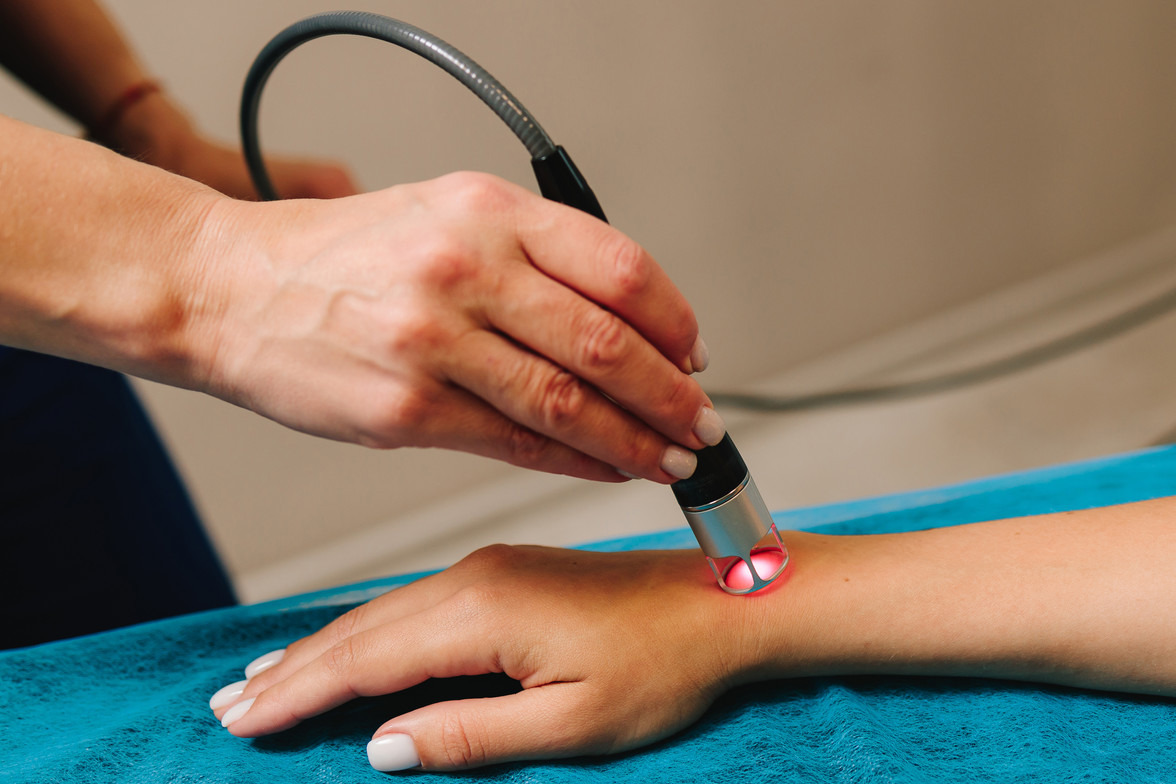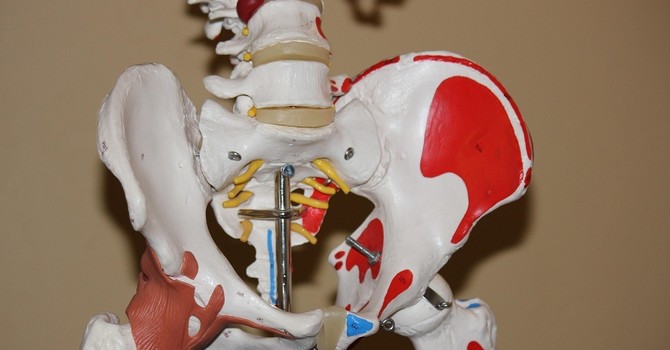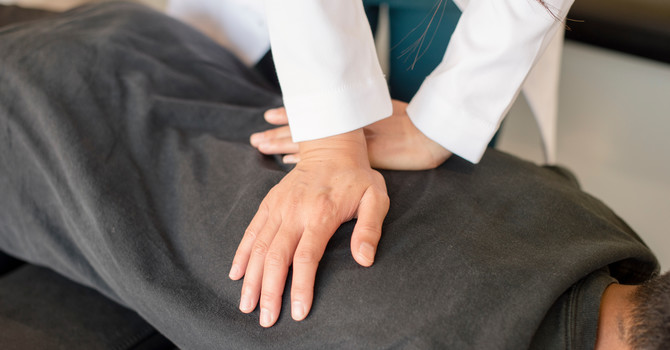
If you're struggling with chronic pain, recovering from an injury, or seeking a non-invasive treatment option, Class IV laser therapy might be the solution you've been looking for. This innovative treatment is gaining popularity among chiropractors, physical therapists, and other rehabilitative health care experts for its ability to improve quality of life and speed up healing times. In this article, we'll explore what Class IV laser therapy is, how it works, and the conditions it can help.
Class IV laser therapy is a non-invasive treatment that uses specific wavelengths of light to stimulate healing in the body. Unlike surgical lasers that cut tissue, therapeutic lasers deliver concentrated light energy to targeted areas to promote cellular repair and reduce pain. The "Class IV" designation refers to the laser's power output, which exceeds 500 milliwatts, allowing deeper tissue penetration compared to lower-powered Class III lasers (often called cold lasers). This higher power enables faster treatment times and more effective results for musculoskeletal conditions.
The therapy is administered using a handheld device that emits red and near-infrared light. Sessions typically last 2-10 minutes, depending on the condition being treated. It’s also painless unlike laser hair removal or surgical lasers which can burn, sting, or cut. Patients often report feeling a gentle warming sensation during the process. It's a safe, FDA-cleared treatment used by chiropractors, physical therapists, and other healthcare professionals to address a variety of ailments.
Class IV laser therapy works through a process called photobiomodulation. When the laser's light energy penetrates the skin, it interacts with cells at a molecular level, triggering several biological responses:
Increased ATP Production: When you focus Class IV laser light on the body the photons from the laser are absorbed by your cells, stimulating your cell’s mitochondria, which act like batteries.Your mitochondria produces adenosine triphosphate (ATP) or cellular energy which your body can then use to accelerate cellular metabolism, tissue repair, and tissue regeneration.
Improved Blood Flow: Laser therapy has been shown to enhance circulation, delivering oxygen and nutrients to damaged tissues while removing waste products, which reduces inflammation and swelling.
Pain Reduction: Laser therapy has also been shown to promote the release of endorphins, the body's natural painkillers, by helping to lower or block pain signals.
Tissue Healing: Another benefit of Class IV Laser light therapy is that some studies show it boosts collagen production. Collagen is the main structural protein found in skin, muscles, tendons, ligaments, and hair. Lately it's gotten a lot of recent attention by influencers, athletes, and most importantly the greater medical community for its importance in maintaining healthy skin and muscles. By increasing production of this protein the body can speed up the recovery of muscles, ligaments, tendons, and nerves.
Class IV laser's ability to penetrate up to 4 cm into tissue makes it particularly effective for deeper injuries, unlike lower-powered lasers that primarily treat surface-level conditions. Treatments are painless, and patients sometimes report immediate relief, though multiple sessions are typically needed for optimal results.
By now you might be wondering what conditions laser therapy can help with and the answer is that there's a lot. Research supports the use of Class IV laser therapy for a wide range of conditions, most notably:
Chronic Pain: The Australian Journal of Physiotherapy found that Class IV laser therapy significantly reduced chronic pain by over 60% in conditions like low back pain and some arthritis (Bjordal et al., 2008).
Neck and Back Pain: Studies show that Class IV laser therapy improves pain and mobility in patients with chronic neck and low back pain, with 71% of cases reporting effective relief and 45% achieving complete pain elimination (Chow et al., 2009).
Neuropathy: Class IV laser therapy can be effective in reducing neuropathy symptoms, such as numbness and tingling (Perera et al., 2020).
Orthopedic Injuries: A systematic review of randomized controlled trials reported improvements in pain, range of motion, strength, and disability in patients with orthopedic injuries, including tendonitis, plantar fasciitis, and sprains, after Class IV laser treatment (Mester et al., 2023).
Post-Surgical Recovery: Laser therapy accelerates wound healing and reduces post-operative pain, with research showing 55% faster healing rates compared to placebo groups (Mester et al., 2023).
Sports Injuries: Athletes benefit from faster recovery times for conditions like muscle strains, ligament injuries, and joint pain, allowing them to return to activity sooner (Perera et al., 2020).
Like any treatment, Class IV laser therapy has advantages and limitations. Understanding these can help you decide if it’s right for you. Let's start with the pros; The first benefit is that laser therapy is non-invasive and painless requiring no incisions or injections, and patients typically feel only a soothing warmth. Secondly there are minimal side effects and in general class IV laser therapy is considered a very safe treatment. Thirdly the treatment times are quick with sessions lasting between 2-10 minutes, allowing for efficient treatment of multiple areas in one visit. Additionally It can be combined with chiropractic adjustments, physical therapy, or massage for enhanced therapeutic results. Finally the results are usually fast with many patients experiencing some pain relief within 24 - 48 hours, improving with each session.
So what are the limitations of class IV laser therapy? Unfortunately some insurance companies classify Class IV laser therapy as “experimental,” meaning patients may need to pay out of pocket if their insurance does not cover it. Additionally there are some contraindications to be aware of before treatment. For example laser therapy is not recommended for patients on light-sensitive medications or for those diagnosed with cancer. Overall however, class IV laser therapy is considered a highly safe treatment for most people.
Now lets talk about what laser we have chosen to use at Modern Care Chiropractic. At our clinic, we’re committed to using cutting-edge research-backed technology to help you achieve lasting relief. Not all lasers are created equal and we have specifically chosen the EVO D30 in our office because of its power, versatility, and precision. This laser uses a combined total of 30 watts of energy, which allows us to treat deeper tissues effectively and far more quickly than lower level lasers. It also has the benefit of combining multiple wavelengths of light energy including 810nm and 980nm. What's the difference you might ask? Well 810 nm wavelengths are better for targeting deeper tissues and providing better circulation and cellular metabolism. The 980 nm is better for treating more surface level pain and inflammation. So by combining the wavelengths we can get all the benefits while reducing treatment time.
Ready to take the next step?
If you’re tired of living with pain or want a non-invasive option to support your recovery, Class IV laser therapy could be a game-changer. It’s safe, effective, and backed by research for a variety of conditions. To find out if it’s right for you, schedule a consultation and we’ll assess your condition, discuss your goals, and create a personalized plan to get you back to doing what you love.
Contact us today to book your appointment and take the first step toward a healthier, pain-free life.
_____________________________________________________________________________________
Sources
1. Bjordal, J. M., Couppé, C., Chow, R. T., Tunér, J., & Ljunggren, E. A. (2008). A systematic review of low level laser therapy with location-specific doses for pain from chronic joint disorders. Australian Journal of Physiotherapy, 54(4), 223-229.
2. Chow, R. T., Johnson, M. I., Lopes-Martins, R. A., & Bjordal, J. M. (2009). Efficacy of low-level laser therapy in the management of neck pain: A systematic review and meta-analysis of randomised placebo or active-treatment controlled trials. The Lancet, 374(9705), 1897-1908.
3. Mester, A., Mester, A., & Tamas, A. (2023). The effects of Class IV laser therapy in treatment for orthopedic injuries and disorders. Journal of Orthopedic Research and Therapy, 8(2), 123-130.
4. Perera, R., & Johnson, M. (2020). High-power laser therapy for peripheral neuropathy: A systematic review. Journal of Pain Management, 13(3), 245-252.

Krysta Huber
Contact Me



